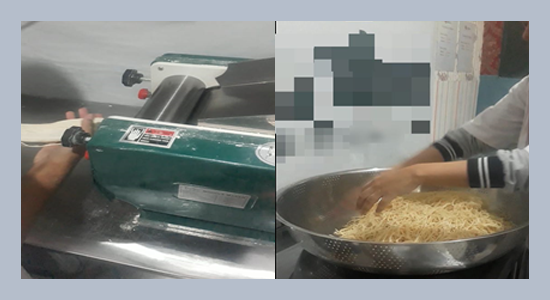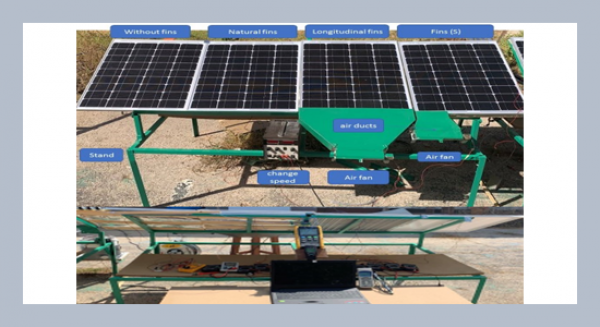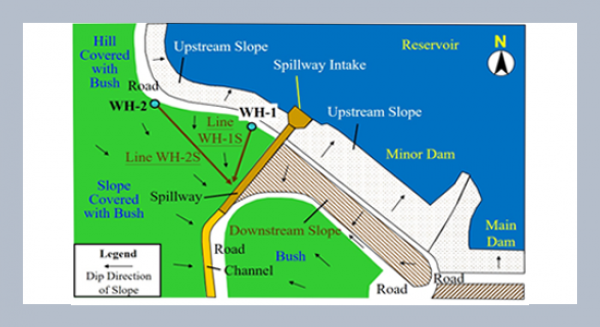REFERENCES
- Agustina, T. 2014. Kontaminasi logam berat pada makanan dan dampaknya pada kesehatan. Teknobuga, 1, 53–65. https://journal.unnes.ac.id/nju/index.php/teknobuga/article/view/6405/4856
- Al-Busaidi, M.A., Jukes, D.J., Bose, S. 2017. Hazard analysis and critical control point (HACCP) in seafood processing: An analysis of its application and use in regulation in the Sultanate of Oman. Food Control, 73, 900–915. https://doi.org/10.1016/j.foodcont.2016.09.042
- Antonius Alijoyo, Wijaya, B., Jacob, I. 2020. Hazard analysis and critical control points-analisis potensi bahaya dan titik kendali kritis. Center for Risk Management and Sustainability. https://lspmks.co.id/wp-content/uploads/2020/04/Hazard-Analysis-and-Critical-Control-Points.pdf
- Astawan, M. 2006. Membuat mie dan bihun. Penebar Swadaya.
- Badan Standardisasi Nasional. 2011. SNI CAC/RCP 1: 2011. Badan Standardisasi Nasional. http://sispk.bsn.go.id/ SNI/DetailSNI/8751
- Badan Standardisasi Nasional. 2015. SNI 2987:2015. http://sispk.bsn.go.id/SNI/DetailSNI/9370
- Chen, C.H., Chou, C.Y. 2020. The optimal order quantity, quality investment, and specification limits settings for the production and supply model. International Journal of Applied Science and Engineering, 17, 353–361. https://doi.org/10.6703/IJASE.202012_17(4).353
- Cheng, S., Huang, C. 2006. Influence of cadmium on growth of root vegetable and accumulation of cadmium in the edible root. International Journal of Applied Science and Engineering, 4, 243–252.
- Dahot, M.U. 1998. Antimicrobial activity of small protein of corn bran. Journal of Islamic Academy of Science, 11(1), 27–32.
- Daulay, S.S. 2020. Hazard Analysis Critical Control Point (HACCP) dan implementasinya dalam industri pangan. https://www.kemenperin.go.id/download/6761/HACCP-dan-Implementasinya-Dalam-Industri-Pangan
- Djaafar, T.F., Rahayu, S. 2007. Cemaran mikroba pada produk pertanian, penyakit yang ditimbulkan dan pencegahanya. Jurnal Litbang Pertanian, 26(2), 67–75.
- Doménech, E., Amorós, J.A., Pérez-Gonzalvo, M., Escriche, I. 2011. Implementation and effectiveness of the HACCP and pre-requisites in food establishments. Food Control, 22, 1419–1423. https://doi.org/10.1016/j.foodcont.2011.03.001
- Doménech, E., Escriche, I., Martorell, S. 2008. Assessing the effectiveness of critical control points to guarantee food safety. Food Control, 19, 557–565. https://doi.org/10.1016/j.foodcont.2007.06.015
- Dzwolak, W. 2019. Assessment of HACCP plans in standardized food safety management systems – The case of small-sized Polish food businesses. Food Control, 106(March), 106716. https://doi.org/10.1016/j.foodcont.2019.106716
- Enjelina, W., Rilza, Y.O., Erda, Z. 2019. Pemanfaatan kulit buah naga merah (Hylocereus polyrhizus sp.) untuk memperpanjang umur simpan mie basah. AcTion: Aceh Nutrition Journal, 4, 63. https://doi.org/10.30867/action.v4i1.162
- Faisal, P., Trisnamansyah, P. 2017. Urgensi Implementasi SNI Produk/Barang dalam Rangka Masyarakat Ekonomi Asean. Jurnal Bina Mulia Hukum, 2, 115–131. https://doi.org/10.23920/jbmh.v2n1.10
- Farkah, S. 2012. Penilaian Manfaat Ekonomi Dari Penerapan Standard Dengan Metodologi ISO (Studi Kasus Unit Bisnis Spinning PT Apac Inti Corpora Semarang). http://eprints.undip.ac.id/32896/
- Firmansyah, L.M., Hidayatullah, T. 2020. Prospek bagus mi instan asal Indonesia. Lokadata. https://lokadata.id/artikel/prospek-bagus-mi-instan-asal-indonesia
- Fridata, I.G., F. Sinung Pranata, L., Purwijantiningsih, E. 2015. Kualitas biskuit keras dengan kombinasi tepung ampas tahu dan bekatul beras merah. Jurnal Teknobiologi, 1–6. http://e-journal.uajy.ac.id/6532/1/JurnalBL0112 3.pdf
- Fu, Q. 2016. Case studies conducted in China based on iso economic benefits assessment methodology of standards. Wuhan International Conference on E-Business, 311–315.
- Hardiyansyah, A., Ikhwana, A., Kurniawati, R. 2015. Analisis Strategi Pemasaran Usaha Mie Basah (Studi Kasus Di PD. LUGINA - Garut). Jurnal Kalibrasi, 13, 1–13. http://sttgarut.ac.id/jurnal/index.php/kalibrasi/article/view/233
- Hariyadi, P. 2010. Penanganan kontaminan pangan dalam rangka menjamin keamanan pangan. https://www.researchgate.net/profile/Purwiyatno_Hariyadi2/publication/259480309_PENANGANAN_KONTAMINAN_
PANGAN_DALAM_RANGKA_MENJAMIN_KEAMANAN_PANGAN/links/0deec52c180c347db8000000.pdf
- Hartati, F.K. 2016. Evaluasi metode pengujian Angka Lempeng Total menggunakan Metode Petrifilm Aerobic Count Plate terhadap Metode Uji SNI 01.2332.2006 Pada Produk Perikanan Di LPPMHP Surabaya. Jurnal Teknik Industri, 13, 89–96.
- Kafetzopoulos, D.P., Psomas, E.L., Kafetzopoulos, P.D. 2013. Measuring the effectiveness of the HACCP Food Safety Management System. Food Control, 33, 505–513. https://doi.org/10.1016/j.foodcont.2013.03.044
- Kartika, E.Y. 2014. Penentuan kadar air dan kadar abu pada biskuit. Jurnal Kimia Analitik, 2.
- Krishna, D., Kumar, G.S., Prasada Raju, D.R. 2019. Optimization of process parameters for the removal of chromium (VI) from waste water using mixed adsorbent. International Journal of Applied Science and Engineering, 16, 187–200. https://doi.org/10.6703/IJASE.201911_16(3).187
- Krishna, D., Kumar, G.S., Raju, D.R.P. 2021. Performance comparison of individual adsorbents and mixed adsorbent for the removal of copper (II) from waste water. International Journal of Applied Science and Engineering, 18, 1–14. https://doi.org/10.6703/IJASE.202103_18(1).010
- Liu, F., Rhim, H., Park, K., Xu, J., Lo, C.K.Y. 2021. HACCP certification in food industry: Trade-offs in product safety and firm performance. International Journal of Production Economics, 231, 107838. https://doi.org/10.1016/j.ijpe.2020.107838
- Manning, L., Baines, R.N. 2004. Effective management of food safety and quality. British Food Journal, 106, 598–606. https://doi.org/10.1108/00070700410553594
- Mulyono, A.B., Pudjiastuti, U. 2013. Manfaat Ekonomi Penerapan Standar di Sektor Makanan Menggunakan Metodologi ISO. 15, 66–81.
- Oleh, H., Wijaya, N., Aprianita. 2018. Kajian Teknis Standar Nasional Indoensia Biskuit SNI 01-2973-1992.
- Pratama, R.I., Rostini, I., Liviawaty, E. 2014. Karakteristik Biskuit dengan Penambahan Tepung Tulang Ikan Jangilus (Istiophorus Sp.). Jurnal Akuatika, 5, 30–39. http://jurnal.unpad.ac.id/akuatika/article/view/3702/2425
- Pudjiastuti, U., Adinugroho, T.P. 2011. Case study of application of ISO methodology to assess economic benefits of standards on PT Wika Beton (Bogor Factory). Jurnal Standardisasi, 13, 128–140.
- Razak, A.R., Daud, N.M. 2020. Hazard Analysis Critical Control Point (HACCP) certification hurdles among Malaysia’s Small and Medium Enterprises (SMEs). International Journal of Academic Research in Business and Social Sciences, 10, 893–899. https://doi.org/10.6007/ijarbss/v10-i5/7320
- Rindang, D. 2016. pengaruh kitosan cangkang kepiting terhadap jumlah koloni bakteri dan keadaan mie basah sebagai sumber belajar biologi [Universitas Muhammadiyah Malang]. http://eprints.umm.ac.id/33335/
- Rosmeri, V.I., Monica, B.N. 2013. pemanfaatan tepung umbi gadung (dioscorea hispida dennst) dan tepung mocaf (modified cassava flour) sebagai bahan substitusi dalam pembuatan mie basah, Mie Kering, dan Mie Instan. Teknologi Kimia Dan Industri, 2, 246–256. https://ejournal3.undip.ac.id/index.php/jtki/article/view/2636/2628
- Santoso, A., Palupi, N.S., Kusumaningrum, H.D. 2020. Histamine Control Study in the Process Chain for Export Frozen Tuna Product. Jurnal Standardisasi, 22, 131–142. https://doi.org/http://dx.doi.org/10.31153/js.v22i2.814
- Sari, R. 2012. Penilaian manfaat ekonomi penerapan stadar dengan metodologi ISO studi kasus PT. Kubota Indonesia. http://eprints.undip.ac.id/32748/
- Setyoko, A.T. 2019. Identifikasi bahaya dan penentuan titik kendali kritis pada ukm keripik nangka di jember. Jurnal Standardisasi, 20, 171. https://doi.org/10.31153/js.v20i3.715
- Setyoko, A.T., Kristiningrum, E. 2019. Pengembangan desain sistem keamanan pangan menggunakan Hazard Analysis Critical Control Point (Haccp) pada ukm produsen nugget ikan. Jurnal Standardisasi, 21, 1. https://doi.org/10.31153/js.v21i1.723
- Setyowati, W.T., Nisa, F.C. 2014. Formulasi biskuit tinggi serat (kajian proporsi bekatul jagung : tepung terigu dan penambahan baking powder). Jurnal Pangan Dan Agroindustri, 2, 224–231. http://jpa.ub.ac.id/index.php/jpa/article/view/71/88
- Sukamto, S., Azizah, R., Suprihana, S., Karim, F. 2019. Produksi mie protein tinggi dari terigu yang difortifikasi tepung komposit dan protein kacang hijau. Prosiding Seminar Nasional Lahan Suboptimal 2019, 487–495. http://www.conference.unsri.ac.id/index.php/lahansuboptimal/article/view/1576/952
- Supriatna, A., Miskiyah. 2016. Sistem keamanan pangan berbahan baku jagung. Buletin Teknologi Pasca Panen, 8, 112–119.
- Susanto, D.A. 2018. Kualitas produk biskuit menghadapi pemberlakuan sni biskuit secara wajib (Studi Kasus di DKI Jakarta). Jurnal Standardisasii, 41, 1–12.
- Susanto, D.A., Isharyadi, F., Ritonga, M. 2017. Manfaat ekonomi penerapan standar pada usaha kecil menengah menggunakan ISO methodology. Jurnal Standardisasi, 19, 25–37. https://doi.org/http://dx.doi.org/10.31153/js.v19i1.411
- Susanty, A., Ulkhaq, M.M., Amalia, D. 2018. Using multivariate control chart to maintain the quality of drinking water in accordance with standard. International Journal of Applied Science and Engineering, 15, 83–94. https://doi.org/10.6703/IJASE.201810_15(2).083
- Tivani, I. 2018. Uji Angka Lempeng Total (ALT) pada jamu gendong temu ireng di desa tanjung kabupaten brebes. Jurnal Para Pemikir, 7, 215–218.
- Trafiałek, J., Lehrke, M., Lücke, F.K., Kołozyn-Krajewska, D., Janssen, J. 2015. HACCP-based procedures in Germany and Poland. Food Control, 55, 66–74. https://doi.org/10.1016/j.foodcont.2015.01.031
- Ulkhaq, M.M. 2011. Penilaian manfaat ekonomi dari penerapan standar dengan metodologi ISO (Studi Kasus PT. ISTW Semarang Tahun 2010). Diponegoro University.
- Wallace, C.A., Holyoak, L., Powell, S.C., Dykes, F.C. (2014). HACCP - the difficulty with hazard analysis. Food Control, 35, 233–240. https://doi.org/10.1016/j.foodcont.2013.07.012
- Wirawati, N.Ri. 2018. Pengaruh penambahan tepung karagenan terhadap sifat fisik, sifat kimia dan organoleptik pada produk kamaboko ikan kembung (Rastrellinger sp.) [Universitas Brawijaya]. http://repository.ub.ac.id/9503/1/NURISNAINIRIZKI WIRAWATI.pdf
- Yanti Meldasari Lubis, Erfiza, N.M., Ismaturrahmi, Fahrizal. 2013. Pengaruh Konsentrasi Rumput Laut (Eucheuma Cottonii) dan Jenis Tepung pada Pembuatan Mie Basah. Rona Teknik Pertanian, 6, 413–420.
- Yin, L. Bin, He, P., Liu, Y.L., Li, L.L. 2020. Application of hazard analysis critical control point in liquor production. IOP Conference Series: Earth and Environmental Science, 559, 1–7. https://doi.org/10.1088/1755-1315/559/1/012017
- Yuniarifin, H., Bintoro, V.P., Suwarastuti, A. 2006. Pengaruh Berbagai Konsentrasi Asam Fosfat Pada Proses Perendaman Tulang Sapi Terhadap Rendemen, Kadar Abu dan Viskositas Gelatin. Indonesian Tropis Animal Agricultural, 31, 55–61. http://www.jppt.undip.ac.id/pdf/31(1)2006p55-61.pdf















